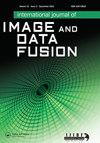Remote sensing data quality model: from data sources to lifecycle phases
IF 1.8
Q3 REMOTE SENSING
International Journal of Image and Data Fusion
Pub Date : 2019-06-23
DOI:10.1080/19479832.2019.1625977
引用次数: 16
Abstract
ABSTRACT The importance of data quality assessment has significantly increased with the boom of information technology and the growing demand for remote sensing (RS) data. The Remote Sensing Data Quality Working Group of the International Society for Photogrammetry and Remote Sensing aimed to conduct an investigation on the principles of data quality. Literature review revealed that most publications introduce data quality models for application specific processing chains and quality schemes are built case by case with particular domain indicators only. Yet no general concept independent from applications has been developed so far. This paper focuses on the formulation of a RS quality concept adopted from information technology domain describing a triangular RS data quality scheme that relates data sources, quality dimensions and lifecycle phases. Following the introduction it provides examples of international standards and fundamentals of theoretic quality modelling. After a short overview on platforms/sensors, definitions of different quality dimensions are presented with their metrics organised in clusters (like resolution or accuracy). The main achievement of the paper relates lifecycle phases to different quality dimensions of high relevance. The objective is not only to address experts of RS but to raise awareness of uncertainty for the general RS user community.遥感数据质量模型:从数据源到生命周期阶段
摘要随着信息技术的蓬勃发展和遥感数据需求的不断增长,数据质量评估的重要性显著提高。国际摄影测量和遥感学会遥感数据质量工作组旨在对数据质量原则进行调查。文献综述显示,大多数出版物都为特定应用程序的处理链引入了数据质量模型,质量方案是根据具体领域指标逐案构建的。然而,到目前为止,还没有开发出独立于应用程序的通用概念。本文从信息技术领域引入RS质量概念,描述了一个三角RS数据质量方案,该方案涉及数据源、质量维度和生命周期阶段。在介绍之后,它提供了国际标准和理论质量建模基础的例子。在对平台/传感器进行简短概述后,给出了不同质量维度的定义,并将其度量按集群组织(如分辨率或准确性)。论文的主要成果将生命周期阶段与不同的高相关性质量维度联系起来。其目的不仅是向RS专家发表讲话,而且提高RS用户群体对不确定性的认识。
本文章由计算机程序翻译,如有差异,请以英文原文为准。
求助全文
约1分钟内获得全文
求助全文
来源期刊

International Journal of Image and Data Fusion
REMOTE SENSING-
CiteScore
5.00
自引率
0.00%
发文量
10
期刊介绍:
International Journal of Image and Data Fusion provides a single source of information for all aspects of image and data fusion methodologies, developments, techniques and applications. Image and data fusion techniques are important for combining the many sources of satellite, airborne and ground based imaging systems, and integrating these with other related data sets for enhanced information extraction and decision making. Image and data fusion aims at the integration of multi-sensor, multi-temporal, multi-resolution and multi-platform image data, together with geospatial data, GIS, in-situ, and other statistical data sets for improved information extraction, as well as to increase the reliability of the information. This leads to more accurate information that provides for robust operational performance, i.e. increased confidence, reduced ambiguity and improved classification enabling evidence based management. The journal welcomes original research papers, review papers, shorter letters, technical articles, book reviews and conference reports in all areas of image and data fusion including, but not limited to, the following aspects and topics: • Automatic registration/geometric aspects of fusing images with different spatial, spectral, temporal resolutions; phase information; or acquired in different modes • Pixel, feature and decision level fusion algorithms and methodologies • Data Assimilation: fusing data with models • Multi-source classification and information extraction • Integration of satellite, airborne and terrestrial sensor systems • Fusing temporal data sets for change detection studies (e.g. for Land Cover/Land Use Change studies) • Image and data mining from multi-platform, multi-source, multi-scale, multi-temporal data sets (e.g. geometric information, topological information, statistical information, etc.).
 求助内容:
求助内容: 应助结果提醒方式:
应助结果提醒方式:


